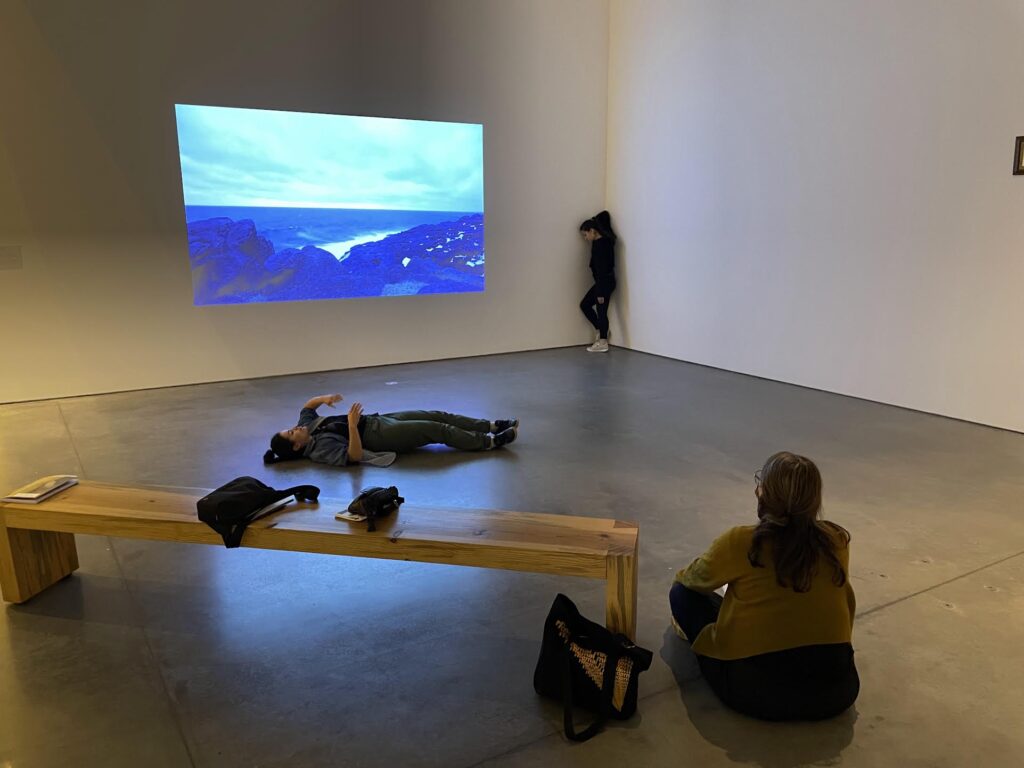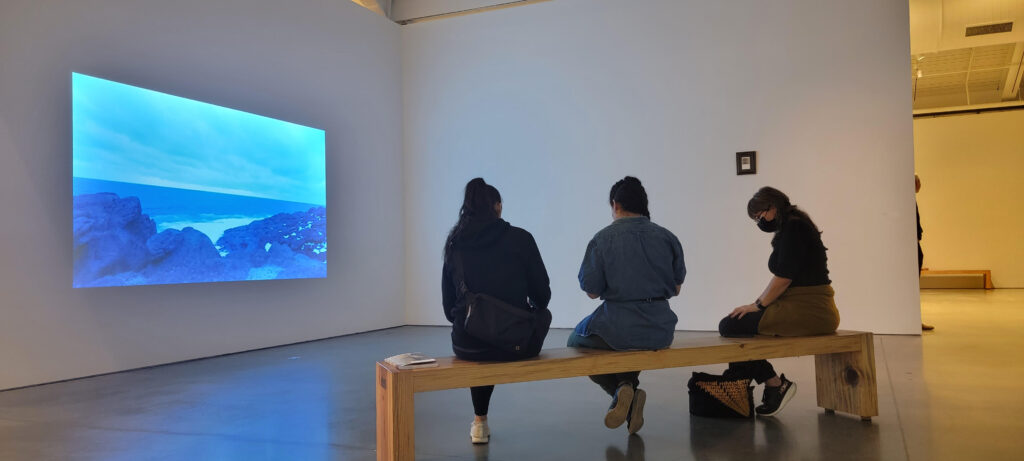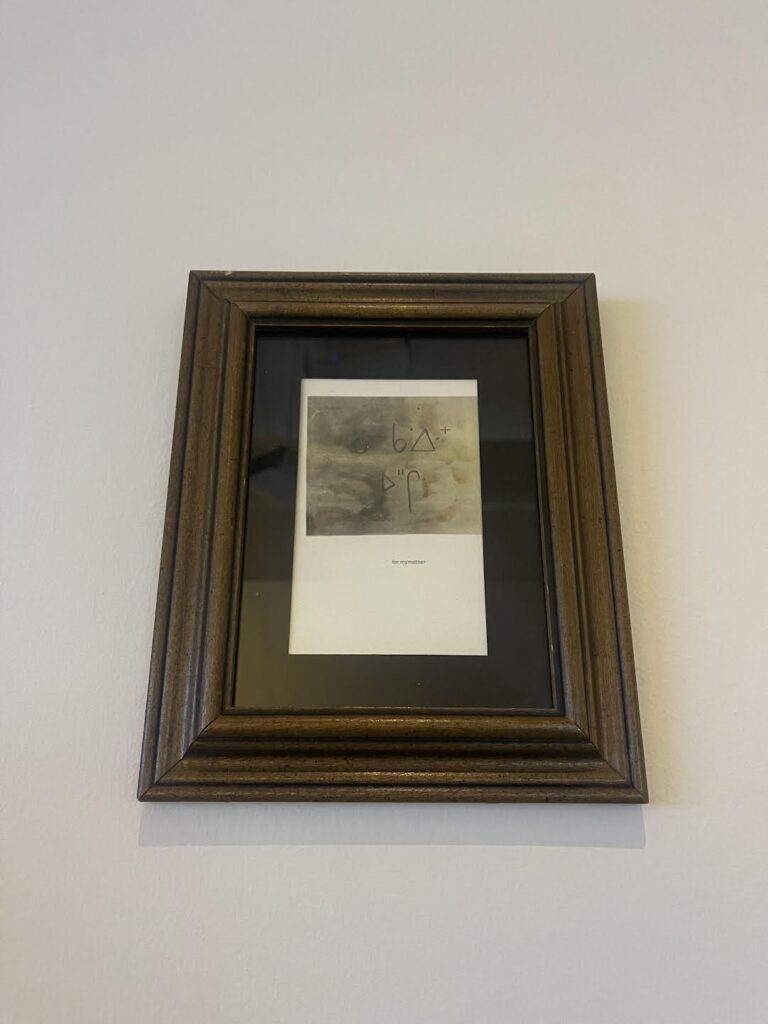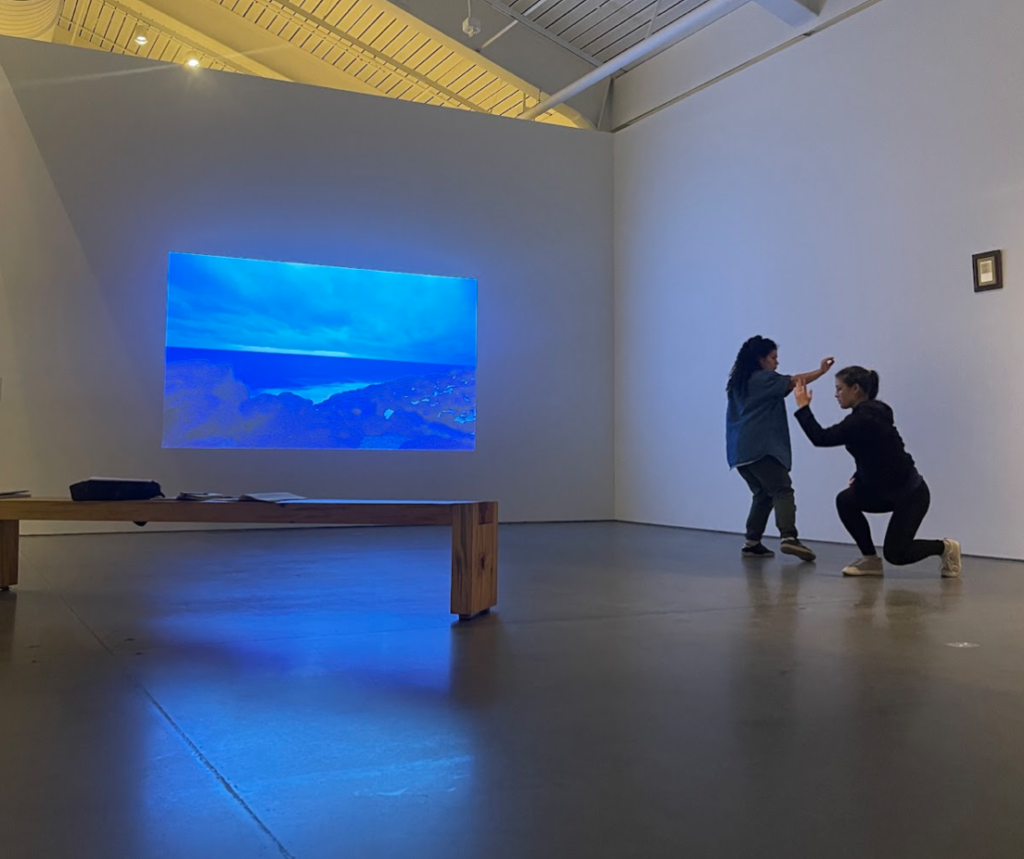by Talia Dixon, February 29, 2024
Artist and choreographer Tanya Lukin Linklater was the Arts Research Center’s Fall 2023 Artist-in-Residence. You can read more about her work, her time at ARC, and her exhibition at BAMPFA here.
Alutiiq artist and scholar Tanya Lukin Linklater’s 2023 residency with the Arts Research Center was a gift. Tanya traveled to Berkeley with dance artists Ceinwen Gobert and Ivanie Aubin-Malo to explore her current choreographic work in progress, Ewako ôma askiy: This then is the earth. Open rehearsals were held at the Berkeley Art Museum & Pacific Film Archive between November 1-4, 2023. It was an honor to bear witness to Tanya’s practice, which is intricate and intentional. Her work prioritizes process over product–there is no culminating performance but rather a series of iterations in open rehearsal. The work’s open rehearsal form evokes an unfolding happening that has life and is meant to be witnessed in the moment in place. Through guided improvisations, or as Tanya terms them, “investigations,” Tanya and her dancers responded to and reflected upon select works within Cree artist Duane Linklater’s exhibit, mymothersside, which just finished its run at BAMPFA. Viewers were invited to witness the intricacies of the exhibition that were amplified through the dancers’ embodied investigations.

mymothersside invokes an unconventional rendering of space/time that transforms the museum space with powerfully charged sculptural, installation, and filmed works. As a graduate student tour guide for the exhibit, I regularly experienced this transformation during my many walks through the exhibition. In my witnessing of Ewako ôma askiy: This then is the earth, my experience of the space and time of the museum shifted yet again. The open rehearsals felt like a deeper excavation of the complex layers of space/ time contained within the exhibition.

During the first night of open rehearsal, Tanya guided the dancers in an improvised investigation of the film on view titled, Sunrise at Cape Spear (2011). From a viewer’s perspective, their investigation blurred the lines between the moving image of the cloud-covered coastal landscape projected onto the dimly lit white museum wall and the rest of the gallery. Not only were Ivanie and Ceinwen seemingly sprouting from the terrain at Cape Spear, the sensorial connection between the two of them, the film, and those who were observing altered the energy of the entire room.


In Tanya’s investigation of Duane’s work, for mymother, return (2021) Ceinwen and Ivanie transcribed the Cree syllabics contained in the piece through movement and gesture. Cree syllabics are a notation system used to represent syllables in the Cree language. The obscurity of the sounds held by syllabics was embodied through thoughtful gestures that were like tender reflections between the small framed image of the syllabics and the dancer’s felt reactions to them. Energy appeared to resonate from the framed syllabics on the wall and through the dancers’ bodies in a cycle of energetic production. The use of syllabics as a score for movement improvisation conjured memories of the brief introduction to the laban/bartenieff notation system that I received in my undergrad dance curriculum. A method of notating movement qualities and choreography, the laban/bartenieff system contains symbols that are not so dissimilar to the Cree syllabics in for mymother, return. However, while the laban/bartenieff system attempts to structure and define movement qualities, Tanya’s response to the syllabics was relational.


The dancer’s bodies weren’t confined by the syllabic forms but rather, communicated with them through their embodied responses to the structure of the symbols. I found this to be a striking example of how Indigenous artistry exists outside the bounds of contemporary dance principles that are rooted in whiteness and settler colonialism. The syllabics didn’t simply represent qualities of sound, but rather were actively being felt through the energetic transfer between the dancers’ bodies and the symbols themselves. The syllabics in the frame had just as much agency as the moving bodies to affect the space of the exhibit. This agentive quality of Duane Linklater’s work was activated as Tanya responded to other pieces in the exhibit throughout the rehearsal process. In activating the museum space in this way, Duane’s work and Tanya’s practice conveyed a felt relationality between the bodies of works, the bodies of the dancers, and the bodies of those of us bearing witness to the rehearsal process.
Tanya’s practice inspires possibilities of contemporary dance and performance for Native artists and audiences. Her work stands out as an innovative and profound use of contemporary dance to explore, or “investigate” contemporary forms of expression on Indigenous terms. In Tanya’s case, her practice is grounded with her knowledge of her community’s traditional Alaska Native dances and the principles carried within these culturally specific forms. There is an element of refusal in this kind of work where viewers aren’t permitted to fully know the complexities held within the practice. Viewers are invited to witness, not to exploit. Tanya’s practice is focused internally rather than externally and is unique to the dancers performing, the place being activated through the movement explorations, and the scale of what is and is not meant to be shared.
Bio: Talia Dixon (she/her) is an enrolled member of the Pauma Band of Luiseño Indians (Payómkawichum) in North San Diego County. She grew up in Hemet California and graduated with her B.F.A. in modern dance from the University of Utah in 2021. She is a dancer, artist, and currently a Ph.D. student in Performance Studies on occupied Ohlone territory at UC Berkeley.
